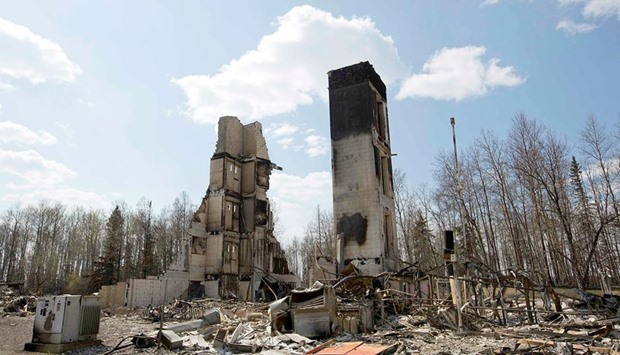A huge wildfire has engulfed parts of Canada, forcing an entire city to evacuate. Approximately 80,000 residents were told to leave their homes as the fire bore down on Fort McMurray. The city became a ghost town, with buildings and cars standing empty and abandoned.
Fortunately, 90 percent of the buildings are believed to have been saved from the fire and this includes some of the most critical infrastructure, such as the hospital and water-treatment plant. However, some of the neighbourhoods that have been hit are now completely unrecognisable. Row upon row of houses has been razed to ground, leaving only an odd surviving lamppost or a burnt out vehicle in a driveway.
Obviously for those people who have lost everything, the pain is almost unimaginable, but even those who still have homes, the trauma isn’t over yet. At the time of writing this, it was still not considered safe enough for anyone to return to the city. The power grid has been damaged and water in the city is no longer safe to drink. For safety reasons the gas supply was turned off during the fire and cannot be switched back on until extensive checks have been undertaken, and there is also a significant amount of debris littering some neighbourhoods. Until these problems have been addressed, the city cannot be considered safe enough for the residents to return.
As one of the coldest countries in the world, Canada is better known for snow and ice hockey, than for its heat and wildfires, but that’s not to say that the country is a stranger to heatwaves. The deadliest weather event to hit the country was an extreme heatwave which struck in 1936. Approximately 780 people lost their lives, and an additional 400 were killed indirectly – as a result of drowning whilst swimming, or in car accidents on asphalt which became slippery in the heat.
The heat usually starts to emerge in the spring, but it doesn’t appear gradually. The frigid icy weather which has been dominating the region throughout the winter is forcefully pushed out by the warm air from the Gulf of Mexico. The battle between the different types of weather can continue for months, and often leads to huge fluctuations in temperature; on April 19 the maximum temperature in Fort McMurray reached a toasty 21C (70F), but the very next day the temperature struggled to reach 4C (39F).
The risk of wildfires in Canada is usually greatest between April and September, but it was already suspected that this year would bring a much greater number of wildfires than usual. Last year was certainly an active season, with western Canada seeing one of the worst wildfire seasons on record.
Over the last three years the region has seen below average rainfall, and 2015 was particularly dry. This is thought to be due to El Nino, the warming of the waters of the Pacific Ocean, which often brings dry conditions to western Canada. The lack of rain has dried out much of the vegetation, leaving the forest particularly vulnerable to fires.
When the deficiency of snow and rain continued last winter, the decision was made to move Alberta’s 2016 wildfire season forward, so it started one month earlier than usual, on March 1. The temperature in Fort McMurray on this day was only -3C, 27F, and therefore the threat of a forest fire was somewhat minimal. However, by the end of the month the temperatures were fluctuating wildly. On May 2, the day that the fire bore down on Fort McMurray, the maximum temperature was 27C (81F) and the following days were even hotter.
The maximum temperature of 32C (90F) was accompanied by a strong and gusty wind. At its worst it was gusting up to 72 kilometres per hour (45 mph), fanning the flames of the fire and encouraging it to spread. Even on May 5, the temperature dropped, but the winds were still working against the fire fighters.
The gusty winds didn’t only help the fire gain ground quickly, but it also helped it to move in unexpected ways. It even jumped the huge Athabasca river, which bisects Fort McMurray. The river is over one kilometre wide, and it was hoped it would protect a portion of the city.
The toll of the fire is far from over, but it is believed that this will be the costliest natural disaster in Canadian history. The insurance claims are said to already have topped one billion Canadian dollars, but the real expense comes from the fact that Fort McMurray is in the middle of the oil sands of Canada. The fire has forced many oil producers to reduce their crude-oil output, with more than a quarter of daily production now suspended.
The residents of Fort McMurray will be desperate to return home and assess the damage to their properties. As the long summer stretches ahead of them, there is still the risk of more fires to come. Having faced a fire which was twice the size of Calgary, or 12 times the size of Doha, the worst for those in Fort McMurray must surely be over. For other parts of western parts of Canada, however, the risk of more life-threatening wildfires remains real.

The devastated neighbourhood of Abasand after being ravaged by a wildfire in Fort McMurray, Alberta, Canada. Photo by Reuters


